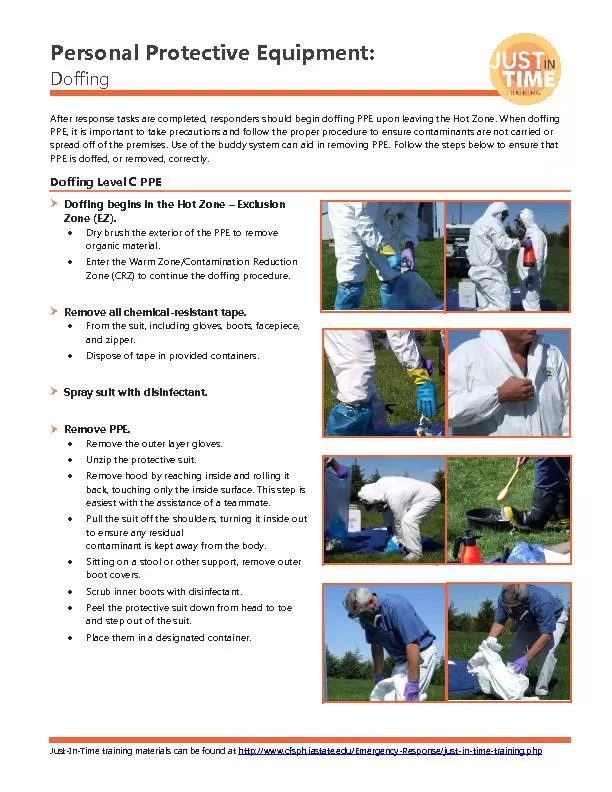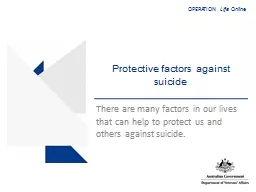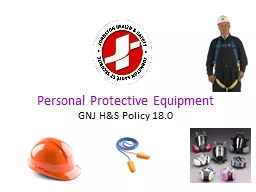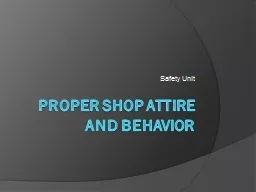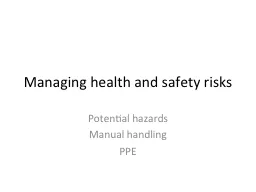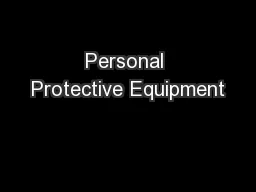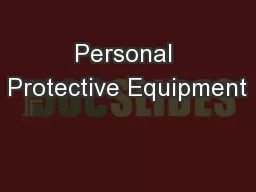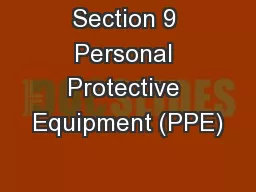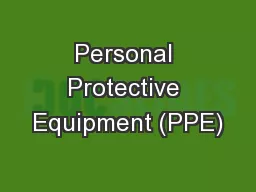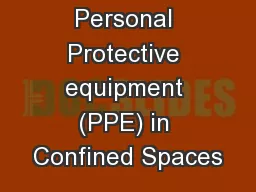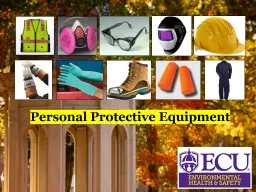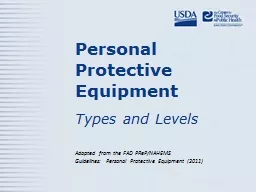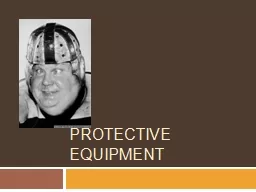PDF-Personal protective equipment
Author : faustina-dinatale | Published Date : 2017-04-27
Just In httpwwwcfsphiastateeduEmergency Resp onsejust in time trainingphp Personal Protective Equipment Do ff ing After response tasks are completed responders
Presentation Embed Code
Download Presentation
Download Presentation The PPT/PDF document "Personal protective equipment" is the property of its rightful owner. Permission is granted to download and print the materials on this website for personal, non-commercial use only, and to display it on your personal computer provided you do not modify the materials and that you retain all copyright notices contained in the materials. By downloading content from our website, you accept the terms of this agreement.
Personal protective equipment: Transcript
Download Rules Of Document
"Personal protective equipment"The content belongs to its owner. You may download and print it for personal use, without modification, and keep all copyright notices. By downloading, you agree to these terms.
Related Documents

